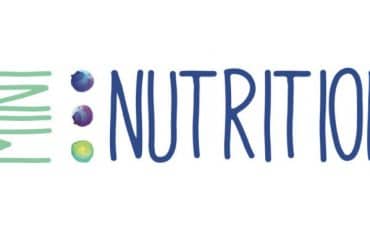A new online database tracks the impact of the coronavirus on Nantucket.

Wrapping your mind around the enormity of damage caused by the coronavirus pandemic can be daunting. The total number of lives claimed, people infected, jobs lost and businesses closed defies the imagination. Yet, here on Nantucket, Community Data Platforms is trying to provide the clearest statistical analysis of the pandemic’s impact on the island in real time. “There is no playbook for COVID anywhere in the world,” said Alan Worden, the founder and CEO of Community Data Platforms. “So leaders need to have foundational data upon which policies can be enacted.” Through a project sponsored by ReMain Nantucket and the Community Foundation, Community Data Platforms has developed a free online dashboard designed for users to not only understand what has happened and what is happening with the pandemic—but perhaps what will happen.
“In the early stages of this project, we were talking to various stakeholders on Nantucket like the Chamber of Commerce, the Health Department, the hospital, and the one thing that came up was the paralysis that occurs when there isn’t a single source of truth to base decisions off of,” explained Ben Maskell, the technical project manager for Community Data Platforms. “Data-driven tools like this [COVID-19 Nantucket Dashboard] are not going to tell you what to do, but they’re at least going to ground you in what’s true. If everyone uses the same facts, more substantive decisions can be made.”
 Aggregating, cleaning and organizing real-time data from a variety of sources, the dashboard maps the ongoing impact of the coronavirus across three categories: community health, financial health and economic health. The community health tab compares the island’s percentage of positive cases of COVID-19 with the whole of Massachusetts, as well as the number of Nantucket’s confirmed cases with the island’s primary feeder communities, namely Boston Metro; Barnstable; Lower Fairfield, Connecticut; Providence, Rhode Island; and New York Metro. Graphing these numbers, the dashboard tracks how Nantucket kept its confirmed cases relatively flat from March until early September, when a significant spike began to take shape.
Aggregating, cleaning and organizing real-time data from a variety of sources, the dashboard maps the ongoing impact of the coronavirus across three categories: community health, financial health and economic health. The community health tab compares the island’s percentage of positive cases of COVID-19 with the whole of Massachusetts, as well as the number of Nantucket’s confirmed cases with the island’s primary feeder communities, namely Boston Metro; Barnstable; Lower Fairfield, Connecticut; Providence, Rhode Island; and New York Metro. Graphing these numbers, the dashboard tracks how Nantucket kept its confirmed cases relatively flat from March until early September, when a significant spike began to take shape.
“You see these two humps, one in mid-September and then a higher one in mid-October,” Maskell described. “One thing we noticed was that the feeder communities all turned red [indicating an increase of more than one case per a thousand since the previous week] before the spike in positive tests on Nantucket.” With this in mind, the dashboard might be used as an early warning system in which users can log on and quickly get a grasp of the situation on the island. If the feeder communities are all blaring red, chances are good that there might be an ensuing spike in cases on Nantucket. However, that’s not to say that the feeder communities are directly responsible for the spike in cases. “There was reasonable fear that visitors from ‘hot spots’ would spread COVID,” Worden explained. “But the virus didn’t spread as a result of visitation. It has been mostly community or local spread.”

The dashboard’s analysis also extends to the island’s financial well-being, which is presented under the financial health tab. The stark reality of the island’s finances is detailed in the first graphic, which projects the revenue loss due to the pandemic at $6 million this year. Transportation data shows a 10.3 percent decrease in ferry passengers as well as a nearly 10 percent drop in vehicles transported to the island by the Steamship Authority. The dashboard is also aggregating the number of meals and occupancy tax rates as another measure of the island’s economic health. The silver lining of the financial health tab is seen in the real estate market, which had an extraordinarily strong year. At press time, Community Data Platforms was in the process of building out the economic health tab, which will detail the number of jobs lost and gained from month to month in specific industries. This will also help determine the unemployment rate on the island.
 With these three tabs in place, along with exquisitely detailed demographic and tourism information, the dashboard will help draw more conclusions by cross-referencing the data and identifying trends. The real-world applications, however, are in the hands of the town leadership, local business owners, nonprofit directors and island residents who can plan based on this data. “Nantucket’s COVID dashboard should function as a single source of truth for the Nantucket community,” said Worden. “I hope that Nantucket’s leaders will coalesce around it and other data resources as decision-making support tools. What does this look like in practice? First, agreement on the facts on the ground and knowing what policy options are on the table is the groundwork for a productive discussion. Our intention with this dashboard is not to make or suggest policy; our goal is to provide a tool that fosters meaningful dialogue.” In the meantime, Community Data Platforms will remain busy as all indications point to an increasing number of cases. However, with this data in place, Worden, Maskell and their team hope that Nantucketers will be able to stay better informed and equipped to manage the ebb and flow of the pandemic.
With these three tabs in place, along with exquisitely detailed demographic and tourism information, the dashboard will help draw more conclusions by cross-referencing the data and identifying trends. The real-world applications, however, are in the hands of the town leadership, local business owners, nonprofit directors and island residents who can plan based on this data. “Nantucket’s COVID dashboard should function as a single source of truth for the Nantucket community,” said Worden. “I hope that Nantucket’s leaders will coalesce around it and other data resources as decision-making support tools. What does this look like in practice? First, agreement on the facts on the ground and knowing what policy options are on the table is the groundwork for a productive discussion. Our intention with this dashboard is not to make or suggest policy; our goal is to provide a tool that fosters meaningful dialogue.” In the meantime, Community Data Platforms will remain busy as all indications point to an increasing number of cases. However, with this data in place, Worden, Maskell and their team hope that Nantucketers will be able to stay better informed and equipped to manage the ebb and flow of the pandemic.
To access the Town of Nantucket’s COVID-19 Dashboard, visit covid.nantucketdataplatform.com.






